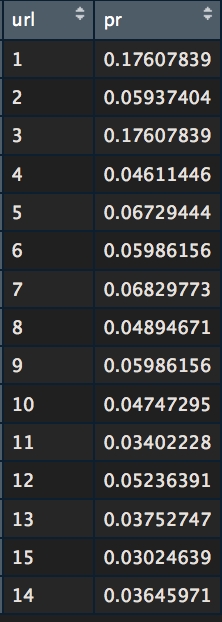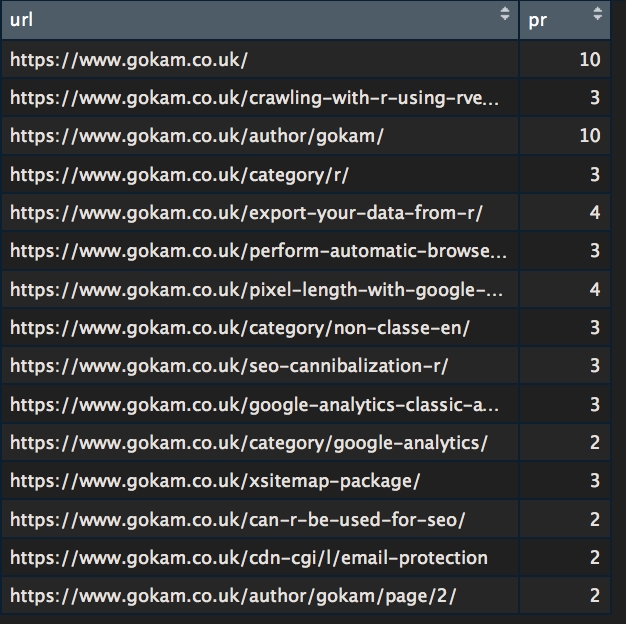Compute ‘Internal Page Rank’
⚠️ THIS IS A WORK IN PROGRESS
It is very much an adaptation of Paul Shapiro awesome Script but Instead of using ScreamingFrog export file, we will use the data from a Rcrawler crawl.
Lets crawl with the link data enabled
Rcrawler(Website = "https://www.rforseo.com", NetworkData = TRUE)When it's done, The links will be stored in the NetwEdges variable.
View(NetwEdges)
We only want to first 2 column:

Let make it more readable, we’re going to put the number on a ten basis, just like when the PageRank was a thing.

On 15 webpages website, it’s not very impressive but I encourage you to try on a bigger website.
Last updated
Was this helpful?